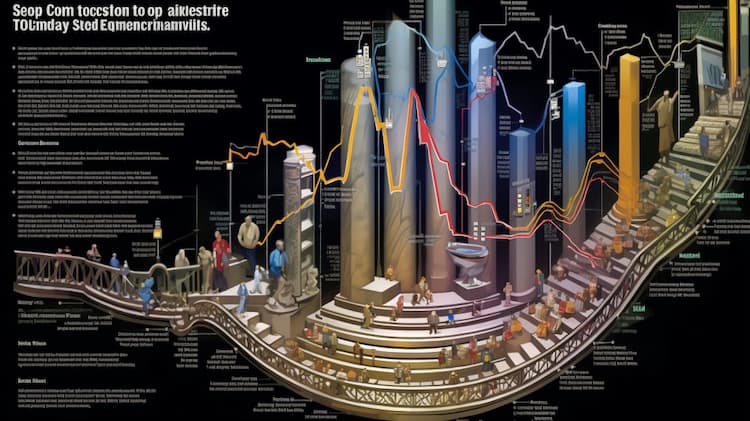UBR ISSUER
The UBS AG, London Branch, serves as the issuer for the UBS MSCI Brazil 25/50 Index ETF (UBR). Established by UBS AG, a leading global financial institution, this ETF aims to provide investors with exposure to the performance of the large and mid-cap segments of the Brazilian market. The UBR ETF is designed to track the MSCI Brazil 25/50 Index, which covers approximately 85% of the free float-adjusted market capitalization in Brazil. With the backing of UBS, this ETF offers investors an opportunity to participate in the Brazilian market's growth and potential while maintaining diversification through a single investment vehicle.
UBR DIVIDEND
Although the primary focus of the ProShares Ultra MSCI Brazil Capped (UBR) ETF may not be on dividends, it reflects the dividend distribution of the underlying MSCI Brazil 25/50 Index. These distributions typically occur based on the dividend policies and performances of the Brazilian companies represented in the index. UBR primarily invests in equity securities, derivatives, money market instruments, and depositary receipts to achieve leveraged exposure to the index. Investors looking for exposure to the Brazilian market with the potential for amplified returns should consider UBR, but it's essential to be aware of the ETF's daily rebalancing and compounding effects on returns.
UBR TRACKING
The UBR ETF, or ProShares Ultra MSCI Brazil Capped ETF, aims to provide investors with leveraged exposure to the MSCI Brazil 25/50 Index. This index is designed to measure the performance of the large and mid-cap segments of the Brazilian market, covering approximately 85% of the free float-adjusted market capitalization in Brazil. The UBR ETF achieves its objective by investing in a combination of financial instruments, including equity securities, derivatives (such as swap agreements), money market instruments (like U.S. Treasury Bills and repurchase agreements), and depositary receipts (such as American Depositary Receipts and Global Depositary Receipts). ProShare Advisors, the fund manager, employs a mathematical approach to maintain daily returns consistent with the fund's investment objective. It's essential to note that the UBR ETF seeks investment results for a single day only and utilizes daily rebalancing, which may lead to deviations from two times (2x) the return of the underlying index over longer periods due to compounding and market volatility.
UBR CORRELATION
The correlation aspect of the ProShares Ultra MSCI Brazil ETF (UBR) is vital for investors looking to understand its relationship with the Brazilian equity market. As UBR seeks to provide daily returns that are double the performance of the MSCI Brazil 25/50 Index, it typically exhibits a strong correlation with the Brazilian stock market. This correlation makes UBR a valuable tool for traders seeking leveraged exposure to the Brazilian market, but it also carries the risks associated with daily compounding and market volatility. To delve deeper into UBR's correlation and its potential impact on investment strategies, investors can utilize the ETF Insider web app, which provides comprehensive data and visualization tools to analyze correlations and overlaps with other US ETFs.
UBR SECTOR
The UBR ETF primarily invests in financial instruments designed to replicate daily returns consistent with its investment objective. This ETF tracks the performance of the large and mid-cap segments of the Brazilian market as measured by the MSCI Inc. index, which covers approximately 85% of Brazil's free float-adjusted market capitalization. UBR's investment portfolio includes equity securities, derivatives (such as swap agreements), money market instruments, and depositary receipts (e.g., ADRs and GDRs). It employs a mathematical approach to investment to achieve leverage (2x) relative to the daily returns of the Index. UBR seeks to engage in daily rebalancing to maintain consistent exposure to its daily investment objective, which can lead to differences in returns over longer periods compared to twice the Index's performance. This ETF may concentrate its investments in specific industries or sectors, mirroring the concentration of the underlying Index, such as materials, financials, and energy as of May 31, 2022. Investors should be aware of the potential risks associated with daily rebalancing, Index volatility, and compounding returns when considering UBR as an investment option.
UBR EXPOSURE
The exposure profile of the ProShares Ultra MSCI Brazil Capped ETF (UBR) is centered on providing leveraged daily returns that align with the performance of the MSCI Brazil 25/50 Index. This index predominantly covers the large and mid-cap segments of the Brazilian market, offering investors exposure to the country''s economic growth potential. UBR achieves its investment objective through a combination of equity securities, derivatives, money market instruments, and depositary receipts, aiming to provide returns that are twice the daily performance of the underlying index.



